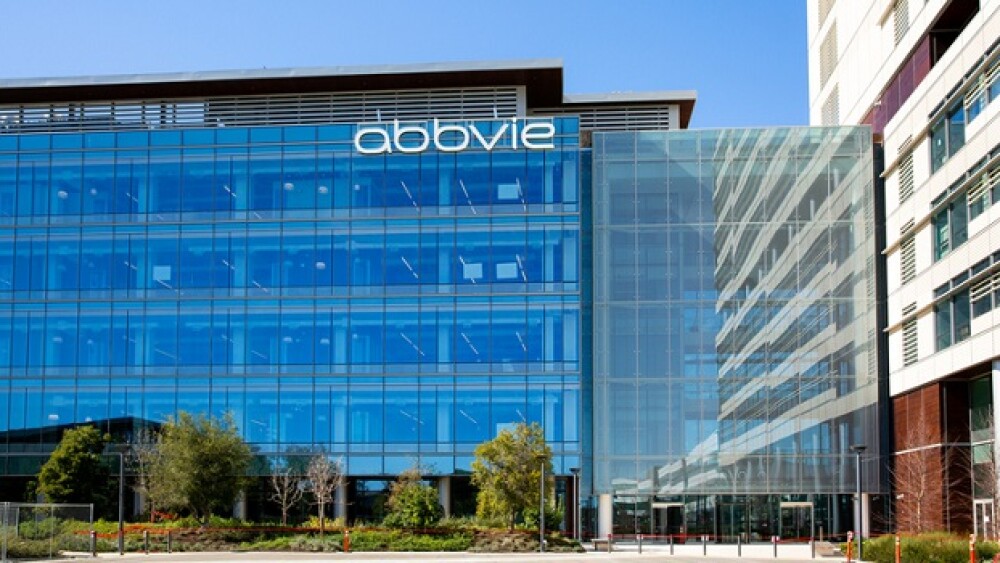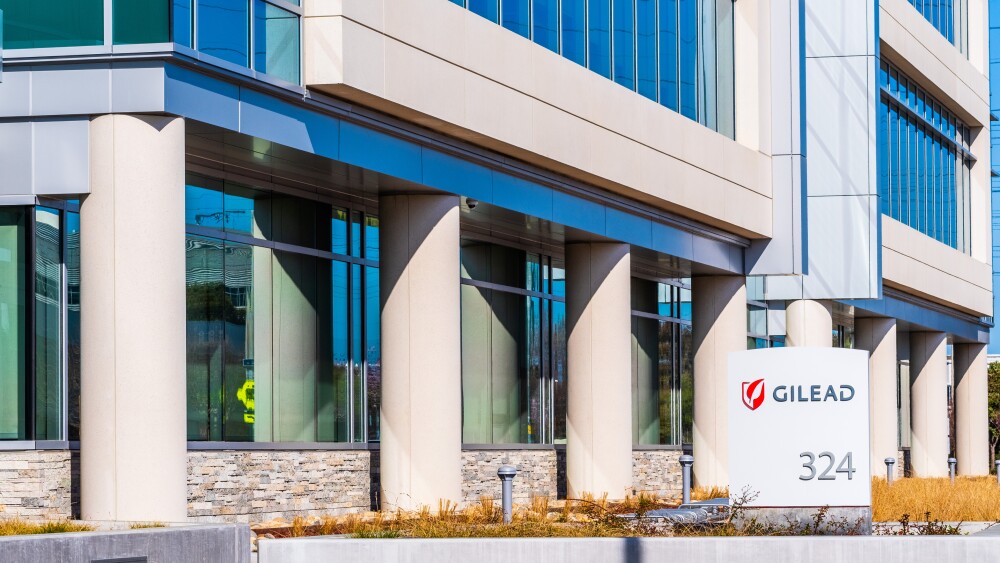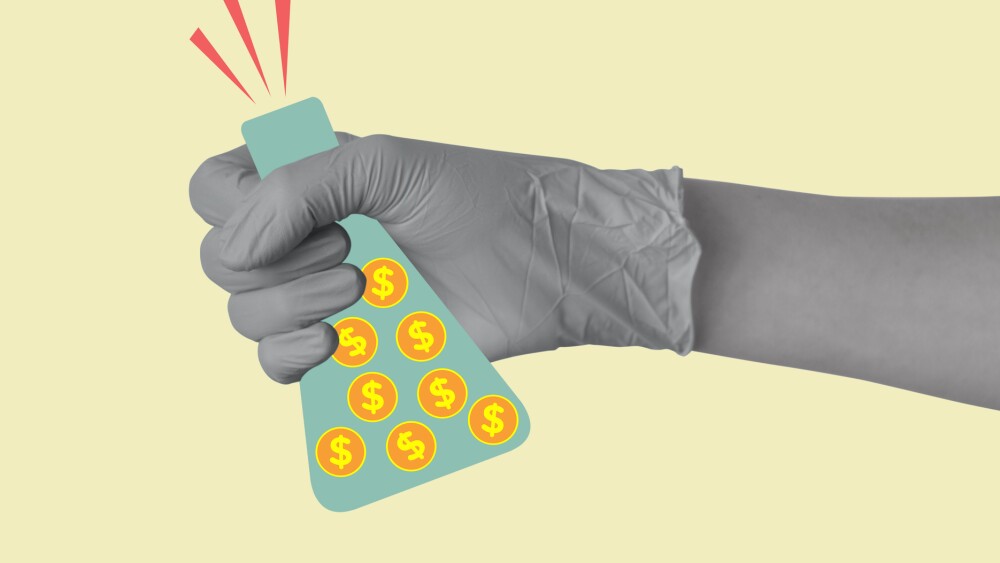MARCY-L'ETOILE, France, March 20 /PRNewswire/ -- The Board of Directors of bioMerieux met on Friday, March 17 to approve the consolidated financial statements for the year ended December 31, 2005. The meeting was chaired by Alain Merieux and attended by the Statutory Auditors.
Consolidated data (in millions of euros) 2005 2004* % change Net sales 993.6 929.3 +6.9% Gross profit 520.4 497.0 +4.7% Operating income 138.9 129.5 +7.3% Net income 90.1 79.7 +13.0% * 2004 figures restated in accordance with IAS/IFRS
"In 2005, bioMerieux met its objectives and laid the foundations for its future development," said Chairman Alain Merieux. "We pursued our international expansion, launched new platforms, signed partnership agreements -- particularly in Asia -- achieved promising results in molecular biology and strengthened our financial position."
Business Review - Net sales totaled euro 994 million versus euro 929 million in 2004, an increase of 5.7% like-for-like or 6.9% as reported. In a highly competitive environment, sales were up in every region, especially Europe and Asia. % change in millions of euros 2005 2004* at in euros constant exchange rates Europe(1) 566.8 533.0 +6.4% +5.8% North America 255.9 244.3 +4.8% +4.3% Asia Pacific(2) 107.5 96.4 +11.5% +10.0% Latin America 63.4 55.6 +14.0% +3.8% TOTAL 993.6 929.3 +6.9% +5.7% *Restated for IAS/IFRS (1) Including the Middle East and Africa (2) Including India, formerly reported with Latin America - Sales growth in the Europe - Middle East - Africa region, which accounted for 57% of the consolidated total, was led by the good results in bacteriology, notably the success of the VITEK(R)2 Compact systems the BacT/ALERT(R) blood culture range. The molecular biology and industrial applications segments also reported sharp increases of 19% and 10% respectively. Sales were especially strong in some large markets, rising 7% in Germany, 8% in the United Kingdom and 5% in Spain. In Italy, however, growth slowed due to heightened competition for the VIDAS(R) range in routine tests. A comparable situation arose in France, where sales nonetheless recovered by 3.7%, thanks in large part to sales of VITEK(R)2 Compact instruments. - In North America (26% of the consolidated total), clinical bacteriology sales rose 8% at constant exchange rates, led by the strong performance from the BacT/Alert(R) blood culture range and the second-half launch of the VITEK(R)2 Compact system. The VIDAS(R) range continued to enjoy fast growth (up 13%) in Emergency Rooms and Physician Office Labs. Sales growth, however, was impacted by a flat performance in industrial applications, due to high comparisons with the prior year, when instrument sales reached exceptional levels, and to a decline in sales of "Other" product ranges. - In the Asia Pacific region (11% of the consolidated total), the VITEK(R) and BacT/Alert(R) bacteriology product lines enjoyed sustained growth, driven by instrument sales from a major tender in China. Growth was also fueled by sales of industrial applications (up 19% at constant exchange rates) and the VIDAS(R) range. In addition to China, where sales continued their rapid growth (up 22%), important gains were reported in South Korea, India and Thailand. - In Latin America (6% of the consolidated total), the sharp increase in sales in bacteriology was offset by flat sales in Brazil, which accounts for more than one-third of business in the region. The lack of growth in Brazil was mainly caused by the non-renewal of the molecular biology tender for monitoring HIV viral load. - At constant exchange rates, clinical applications (euro 866 million) rose 5.3%, while industrial applications (euro 128 million) were up 8.3% for the year. - In clinical applications, growth was led by bacteriology (up 10% for the year at constant exchange rates), thanks to the success of the VITEK(R)2 Compact system and strong demand for BacT/Alert(R). Sales of the VIDAS(R) range continued to increase in Physician Office Labs in the United States and Germany, Emergency Rooms, and the Asia-Pacific region, despite difficulties in certain European countries in routine tests. In December 2005, the new VIDIA(TM) system was pre-launched in France, Belgium and Portugal. - In industrial applications, full-year sales were up 8.3% at constant exchange rates. In the pharmaceutical segment, growth was led by the development of the culture media range and the successful global introduction of the VITEK(R)2 Compact system. Broadening the VIDAS(R) menu and the range of chromogenic culture media boosted sales in the food industry, where the TEMPO(R) system was also launched. - Nearly 3,500 new instrument systems were installed, increasing the total base to around 42,000 units at December 31, 2005. Instruments sales accounted for 11.8% of the consolidated total, compared with 10.4% in 2004. The increase was led by the rapid development of the VITEK(R)2 Compact system, which was successfully introduced in the main European countries in the first half, then in the United States, Japan and the rest of the world in the second half. The year also saw the launch of the easyMAG(TM) automated extraction system in molecular biology, the TEMPO(R) automated system for industrial applications and the first installations of the new immunoassay VIDIA(TM) system. The launch of the last two platforms had only a very limited impact on 2005 sales. Their impact on 2006 sales will also be marginal because of the need to build up an installed base and develop the menu of related reagents. Sales of reagents accounted for 83.8% of the consolidated total (versus 85.4% in 2004) and services invoicings represented 4.4% (4.2% in 2004). 29 new reagents and software applications were introduced in 2005 across all product ranges. - The Company continued to expand its international network during the year. The creation of two new distribution subsidiaries in Hungary and the Czech Republic increased the number of bioMerieux subsidiaries outside France to 35. In China, where bioMerieux has operated for many years, the Company's headquarters were transferred to Shanghai. - A number of licensing agreements have also been signed, in particular with: - Brahms, for the use of procalcitonin as a marker for the diagnosis of severe bacterial infections. - Roche Diagnostics, for the use of proBNP as a marker for congestive heart failure and acute coronary syndrome. - Gen-Probe, for access to ribosomal RNA markers for bacterial targets. - The Company has also created important partnerships with: - The Chinese Academy of Medical Sciences in the field of emerging pathogens. - US-based Affymetrix and French biotechnology company ExonHit Therapeutics in the area of oncology. - diagnoSwiss to develop electrochemical chips, with a focus on immunoassays. - Indian biotechnology company Avestha Gengraine in the area of tuberculosis. - In an increasingly strict regulatory environment, bioMerieux continued to deploy action plans initiated in 2004 to strengthen its quality assurance system, especially at its facility in Durham, North Carolina. - In May, the US Food and Drug Administration (FDA) conducted an inspection of the microplate immunoassay product ranges, produced at the facility and sold exclusively in the United States, and sent a warning letter to bioMerieux on July 29. In response to observations from the FDA, the North American subsidiary focused its efforts on action plans to strengthen the quality assurance system at the plant. These initiatives focused on upgrading facilities, improving processes and overhauling certain teams. A follow-up inspection by the FDA in late 2005 re-emphasized the need to step up the corrective action plans already underway. - Inspections carried out during the year at other facilities, particularly in France and the United States, produced satisfactory results. Financial Data - IAS/IFRS Financial statements for the year ended December 31, 2005 were prepared using IAS/IFRS. Figures for 2004 have been restated in accordance with the new standards. The changeover to IFRS has had no significant impact on net income, except for the elimination of goodwill amortization, which represented an expense of euro 4.4 million at December 31, 2004. The introduction of the new standards has led to a reclassification of certain 2004 expenses, notably those related to the initial public offering, but this did not have any impact on net income. However, it did result in a euro 2.7 million reduction in 2004 operating income, as restated for purposes of comparison with 2005 figures. - Statement of income - Gross profit rose by euro 23.4 million to euro 520.4 million, representing 52.4% of sales, versus 53.5% in 2004 (following a 160 basis-point increase in 2004). The decline reflected measures to strengthen quality assurance systems and higher shipping costs, as well as the second-half impact of higher raw material costs and the relative weight of instrument sales, which generate lower gross margins than reagents. - Despite the strengthening of sales and marketing teams and the full- year impact of expenses related to the listing, selling, general and administrative expenses represented 26.1% of sales for the year, compared with 26.4% in 2004. - Research and development expenses amounted to euro 130.7 million, or 13.1% of sales (versus 13.6% in 2004). Funds allocated to develop the license portfolio (new bio-markers, Affymetrix, diagnoSwiss, etc.) totaled euro 8.2 million (euro 6.9 million in 2004). Operating income before non recurring items amounted to euro 138.8 million, or 14% of sales, compared with 14.4% during the previous year. Operating income rose by 7.3% to euro 138.9 million. It represented 14% of sales, versus 13.9% in 2004, when euro 5.2 million in IPO-related expenses were recognized. - Net financial expense declined by euro 10.1 million, because of lower debt, a reduction in average interest rates and the favorable impact of a number of non-recurring financial items. In particular, 2005 was marked by exchange rate gains and lower provisions for impairment of shares. In addition, there were no debt-restructuring costs, unlike in 2004. - Income tax rose by euro 9.1 million because of an increase in taxable earnings and a higher average tax rate, which stood at 34.9% of pretax income, versus 33% the year before. In conclusion, net income rose by 13% to euro 90.1 million, or 9.1% of sales (compared with 8.6% in 2004). - Statement of cash flows and balance sheet - Continued high earnings, stable working capital and disciplined management of capital expenditure helped to generate free cash flow of roughly euro 89 million (prior to a total dividend payout of euro 15.8 million in June 2005). This represented an increase of nearly euro 16 million (21%) over the previous year. Despite the increase in sales, operating working capital requirement was unchanged for the year. The increase in inventories (euro 16.3 million), resulting mainly from new products and the impact of strengthening the quality assurance systems, was offset by an increase in payables. It was also offset by the fact that substantial payments in Southern Europe held growth in receivables to a slight euro 2.7 million. As a result, the days sales outstanding was reduced by five days on a comparable basis. - Investments totaled euro 82 million for the year, of which euro 38 million for placed instruments. Capital expenditure amounted to euro 44 million, as follows: - In France, at plants in: - Marcy, near Lyon, where a research building was finalised, - Grenoble, where molecular biology operations in France have been consolidated. The new unit will be officially inaugurated on April 13, 2006. - Craponne, near Lyon, where the Petri dish production unit was expanded. - Plaine de l'Ain, in the International Distribution Center. - In Italy, in Florence, with the extension of production facilities for the TEMPO(R) and VIDIA(TM) instruments. - In the United States, at the Durham plant, where the Company pursued its investment programs, in particular to respond to quality assurance requirements. - Net debt amounted to euro 43.3 million at December 31, 2005, a year- on-year decline of nearly euro 75 million, and represented 9% of equity. - Dividend The Board of Directors will recommend that shareholders at the Annual Meeting on June 8 approve a dividend of euro 0.46 per share (versus euro 0.40 in 2005), corresponding to the payout of 20% of net income for the year. Outlook for 2006
In 2006, bioMerieux will continue to deploy the VITEK(R)2 Compact, TEMPO(R), easyMAG(TM) and VIDIA(TM) platforms and expand the reagents menus. Like-for-like sales growth is expected to be 5 to 6%, with a relatively sharper increase in the first quarter.
Operating margin should feel the full-year impact of higher raw material prices and the continuing impact of measures to strengthen quality assurance systems. It will also reflect costs related to the VIDIA(TM) launches and platform deployments. Nonetheless, because of productivity and cost optimization programs, the Company maintains its target of 2006 operating margin on a par with 2005, at comparable exchange rates and scope of consolidation.
"2005 was a good year for bioMerieux," said Executive Vice President Benoit Adelus. "We strengthened our positions in our core businesses, thanks to the successful launch of new platforms and sustained business growth, especially in Europe and Asia. We generated net income of euro 90 million, a 13% increase, while pursuing our research and development projects and investment programs."
Upcoming events - April 20, 2006: First-quarter sales announced - June 8, 2006: Annual Meeting of Shareholders About bioMerieux
bioMerieux is a leading international diagnostics group that specializes in the field of in vitro diagnostics for clinical and industrial applications.
- Clinical applications: the diagnosis of infectious diseases such as hepatitis, HIV, tuberculosis and respiratory illnesses, as well as pathologies such as certain cardiovascular diseases and certain cancers, based on the analysis of biological samples (such as blood, saliva or urine); and
- Industrial applications: the microbiological analysis of food, environments (such as water and air), surfaces and pharmaceutical and cosmetic products, based on product or environmental samples.
bioMerieux is listed on the Premier Marche of Euronext Paris .
bioMerieux CONSOLIDATED INCOME STATEMENT In millions of euros JAN 05 - DEC 05 JAN - DEC 04 NET SALES 993,6 929,3 COST OF SALES -473,2 -432,3 GROSS PROFIT 520,4 497,0 OTHER OPERATING INCOMES 8,3 8,9 SELLING AND MARKETING EXPENSES -177,3 -167,9 GENERAL AND ADMINISTRATIVE EXPENSES -81,9 -77,1 RESEARCH AND DEVELOPMENT -130,7 -126,8 TOTAL OPERATING EXPENSES -389,9 -371,8 OPERATING INCOME BEFORE NON RECURRING ITEMS 138,8 134,1 NON RECURRING INCOMES AND EXPENSES 0,1 -4,6 OPERATING INCOME 138,9 129,5 COST OF NET FINANCIAL DEBT -1,6 -9,3 OTHER FINANCIAL ITEMS 1,2 -1,2 INCOME TAX -48,4 -39,3 NET INCOME OF CONSOLIDATED COMPANIES 90,1 79,7 ATTRIBUTABLE TO THE MINORITY INTERESTS 0,0 0,0 ATTRIBUTABLE TO THE PARENT COMPANY 90,1 79,7 NET INCOME PER SHARE (a) 2,28 2,04 (a) In the absence of dilutive instruments, diluted net income per share is identical to basic net income per share Consolidated Balance Sheet bioMerieux ASSETS NET NET In millions of euros 31/12/2005 31/12/2004 NON-CURRENT ASSETS . Intangible fixed assets 19,5 20,5 . Goodwill 69,6 66,2 . Property, plant and equipment 276,2 260,6 . Financial assets 15,8 11,3 . Other non-current assets 22,6 16,5 . Deferred tax assets 24,6 18,6 TOTAL 428,3 393,7 CURRENT ASSETS . Inventories and work in progress 156,0 129,1 . Accounts receivable 277,7 263,5 . Other operating receivables 14,2 18,3 . Non-operating receivables 9,0 12,1 . Cash and cash equivalents 20,9 21,9 TOTAL 477,8 444,9 TOTAL ASSETS 906,1 838,6 LIABILITIES 31/12/2005 31/12/2004 SHAREHOLDERS' EQUITY . Share capital 12,0 12,0 . Additional paid-in capital 63,7 63,7 . Retained earnings 312,8 248,6 . Other comprehensive income -1,3 0,2 . Translation reserve 20,9 -13,4 . Net income for the year 90,1 79,7 TOTAL SHAREHOLDERS' EQUITY 498,2 390,8 MINORITY INTERESTS 0,3 0,7 TOTAL EQUITY 498,5 391,5 NON-CURRENT LIABILITIES . Long term financial indebtedness 16,9 114,5 . Deferred tax liabilities 3,5 4,8 . Non-current provisions 81,9 76,4 TOTAL 102,3 195,7 CURRENT LIABILITIES . Short term financial indebtedness 47,3 25,5 . Accounts payable 99,2 87,1 . Other operating liabilities 131,5 116,4 . Tax liabilities 14,5 10,6 . Non-operating liabilities 12,8 11,8 TOTAL 305,3 251,4 TOTAL LIABILITIES AND SHAREHOLDERS' EQUITY 906,1 838,6 bioMerieux CONSOLIDATED STATEMENT OF CHANGE IN NET INDEBTEDNESS jan 05-dec 05 jan 04-dec 04 In millions of euros 12 months 12 months Net income of consolidated companies 90,1 79,7 Net depreciation and provisions, and others 71,9 80,7 (Increase) / Decrease in fair value of derivatives 0,2 0,3 Net realized capital gains (losses) -2,4 -1,3 Cash flow from operating activities 159,8 159,4 Cost of net financial debt 1,6 9,3 Current income tax expense 52,6 37,2 Cash flow from operating activities before cost of financial debt and income tax 214,0 205,9 Increase in inventories -16,3 -9,9 Increase in accounts receivable -2,7 -4,5 (Decrease) Increase in accounts payable and other operating working capital requirements 20,0 5,6 Decrease (Increase) in operating working capital requirements 1,0 -8,8 Income tax paid -46,0 -22,7 Cost of net financial debt -1,6 -9,3 Other -1,1 -2,7 (Increase) Decrease in non-current assets -1,8 -1,5 Decrease (Increase) in working capital requirements -49,5 -45,0 Net cash flow from operations 164,5 160,9 Purchase of property, plant and equipment -81,6 -82,6 Proceeds on disposal of property, plant and equipment 12,2 6,9 Purchase of financial assets -5,7 -0,4 Impact of changes in the scope of consolidation -0,5 (1) -1,7 (2) Loans and advances to affiliates 7,8 (3) Net cash flow from (used in) investment activities -75,6 -70,0 Capital increase - bioMerieux SA 12,6 (4) Purchases and proceeds of treasury stocks -0,1 Dividends to bioMerieux SA shareholders -15,8 -30,0 (5) Net cash flow from (used in) shareholders' equity -15,9 -17,4 CHANGE IN NET INDEBTEDNESS (6) 73,0 73,5 ANALYSIS OF CHANGE IN NET INDEBTEDNESS Net indebtedness at the beginning of the year 118,1 188,3 Impact of currency changes in net indebtedness -1,8 3,3 Change in net indebtedness -73,0 -73,5 - Confirmed facilities -97,5 -101,4 - Cash and other bank deposits 24,5 27,9 Net indebtedness at the end of the year 43,3 118,1 (1) Acquisition of part of the minority interests in bioMerieux Mexico (2) Net indebtedness of NBMA on the date of its merger into bioMerieux SA (pre IPO transaction) (3) Repayment of a debt by TSGH (pre IPO transaction) (4) Offering of new shares to employees, in connection with the IPO (5) Distribution of dividends decided by the Shareholders' Meeting of April 16, 2004 (pre IPO transaction) (6) Change in net indebtedness, excluding exchange rate effects
bioMerieuxCONTACT: Investor Relations, Dominique Takizawa, or Herve Laurent, both ofbioMerieux, +33 4 78 87 22 37, or investor.relations@eu.biomerieux.com; orNancy Levain of LT Value, +33 1 55 27 15 88, or nancy.levain@ltvalue.com;or Media Relations, Christelle Chabert of bioMerieux, +33 4 78 87 52 01, orchristelle.chabert@eu.biomerieux.com; or Tiphaine Hecketsweiler,thecketsweiler@image7.fr, or Laurence Heilbronn, lheilbronn@image7.fr, bothof Image Sept, +33 1 53 70 74 59
Web site: http://www.fwv-us.com//




